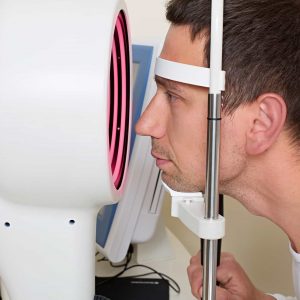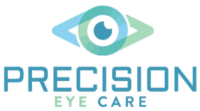Book Online
Just choose the appointment type and time that work best for you, and you're on your way to clear, comfortable vision!


Get clear, comfortable vision with the latest contact lenses even if you can’t wear off-the-shelf contacts.
Just choose the appointment type and time that work best for you, and you're on your way to clear, comfortable vision!

Contact lenses are not an easy solution for every person suffering with vision problems. Some eye conditions make wearing contacts a difficult proposition. However, it does not rule out wearing contact lenses altogether. It just means patients need to discuss options with their eye care provider and obtain specialized hard-to-fit contacts for their specific vision problems.
Finding contact lenses that fit and wearing contact lenses in general can be made more challenging when these conditions affect your eyes:
Astigmatism: Astigmatism develops when the front of the eye curves into a bulge or oval shape. It causes blurred vision and can be difficult to correct because regular contacts cannot account for the bulging.
Dry Eyes: When eyes become excessively dry, it leads to irritation, burning, redness, and blurred vision. Contact lenses can exacerbate these conditions by making it feel like a foreign object is stuck in your eye.
GPC: This form of conjunctivitis is caused by inflammation on the inner surface of the eyelid. Protein buildup on contact lenses can make this condition worse. People who struggle with allergies or do not discard their contacts as often as they should are more prone to developing GPC.
Keratoconus: This is an uncommon condition that causes major discomfort when wearing contacts. Keratoconus happens when the cornea becomes thinner and allows the eye to bulge forward. The bulge forms into a cone shape.
Post-Refractive Surgery: When people receive refractive surgery or receive a corneal transplant, the shape of their cornea is permanently altered and standard soft contact lenses no longer fit properly.
Presbyopia: Eyes tend to have a tougher time focusing on close objects as they age. This condition is known as presbyopia. It typically affects people aged 40 or older.
Wearing contacts is not impossible if you suffer from one of the above conditions. You do need to meet with an eye care professional, however, and get prescribed contact lenses that are tailored to deal with your specific vision condition.
Astigmatism: Toric lenses are useful for correcting astigmatism. Since the lens needs to align with the bulge it is correcting, toric lenses must not rotate in order to fit on the eye. They are typically custom made to correct a specific astigmatism. For that reason, this type of lens takes longer to make and costs more than a traditional contact lens. Toric lenses need to be fit properly to prevent “ghosting” or fluctuating vision.
Dry eyes: Artificial tears, omega three fatty acid supplements, and medicated eye drops can all be effective solutions for dealing with dry eyes. They can make contact lenses significantly more comfortable. Punctual occlusion may also be needed in some extreme cases to keep the tears on the eyes by plugging the ducts. Discuss your dry eye symptoms with your doctor to determine which treatment protocol will be most effective for you.
GPC: Daily lenses are ideal for patients who suffer from GPC because the lenses never have the opportunity to acquire enough protein and lipid deposits to cause GPC. Usually patients will need to have their GPC medically treated before they can resume contact lens wear.
Keratoconus and Other Corneal Deformities: Hybrid or gas permeable (GP) lenses are a good solution for patients who suffer from Keratoconus and other corneal deformities. A hybrid or GP lens will restore a spherical shape to bulging or otherwise deformed cornea and provide significantly better vision than glasses or soft contacts.
Post-Refractive Surgery and Post-Corneal Graft: Custom soft, hybrid, and gas permeable lenses can be made to fit a cornea that has been surgically altered. A topographical map is taken of the cornea and a unique new lens is created to fit it. It’s like having a custom glove made for your hand.
Presbyopia: Bifocal and multifocal lenses can help remedy presbyopia. Monovision lenses are another option for presbyopia where one eye is fitted for distance vision and the other for seeing close objects. The brain automatically knows which eye to use for which viewing distance. Your eye doctor will be able to help you determine which option is best for you.
| Monday - Thursday |
|
||
| Friday |
|
||
| Saturday | Closed | ||
| Sunday | Closed |
